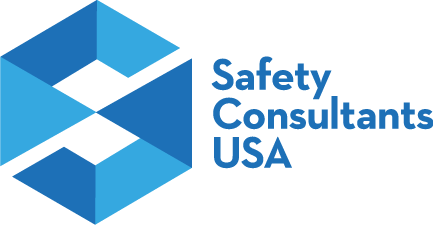The Occupational Safety and Health Administration’s (OSHA) primary purpose is to ensure workplace safety across various industries. OSHA releases a list of the top 10 citations each year, highlighting the most common OSHA violations found during inspections. Data is released in September for the year prior, but gives us some insight into the state of worker safety and sheds light on prevalent issues and areas needing general improvement. This article delves into OSHA’s top 10 citations during 2024, providing a detailed analysis of the top 10 OSHA citations and their potential impact on worker safety.
While the top 10 citations did not change, here are some of the noteworthy changes in the ranking:
- The total number of overall citations in the 10 categories decreased by just over 10%.
- There were no changes to the top 3 citations from 2023.
- Respiratory Protection moving from 7th to 4th.
- Lockout Tagout (LOTO) moved up one spot, from 6th to 5th.
- Powered Industrial Trucks moved down from 5th to 6th.
- Scaffolding citations had a dramatic improvement and moved down from 4th to 8th.
Here’s a quick overview of the top 10 along with some additional insights and how to avoid citations.
1. Fall Protection – General Requirements (29 Code of Federal Regulations (CFR) §1926.501): 5,914 citations
(29 CFR 1926.501) [related safety resources]
Topping the list for yet another year is the violation related to fall protection. Falls remain the leading cause of workplace injuries and fatalities, emphasizing the critical importance of proper safety measures. Employers are cited under this standard when they fail to provide adequate fall protection systems. While the number of citations decreased overall, it was still the most frequently cited standard. Frequency of this citation underscores the need for comprehensive fall prevention programs and site safety inspections verifying that proper fall protection is in place to prevent falls.
2. Hazard Communication (§1910.1200): 2,546 citations
(29 CFR 1910.1200) [related safety resources]
Hazard Communication is the identification and labeling of chemicals used in the workplace. The OSHA violations of the Hazard Communications standard typically involve:
- Missing labels from secondary containers
- Lack of or out of date Safety Data Sheets (SDS)
- Incomplete employee training regarding hazardous chemicals
- Absence of a Hazard Communication written program
It is no surprise that this standard is in the top 10 citations as it is common for Safety Data Sheets to be misplaced when new chemicals are ordered. Additionally, chemicals are frequently placed in secondary containers for use by employees, yet no labels are affixed to document what chemical is inside or what hazards it could cause if improperly used or in the event of accidental contact with skin or eyes.
3. Ladders (§1926.1053): 2,405 citations
(29 CFR 1926.1053) [related safety resources]
Ladder use may seem simple, but the improper use and maintenance of ladders can lead to significant injuries and death. The CDC reports that there were 22,710 workplace injuries from ladders in 2020. This staggering number is one reason OSHA places a heavy focus on ladder safety. Citations in this category frequently stem from:
- Setup – Lack of a stable surface, improper angle (should be 4 to1), and A-Frame ladders used in place of extension ladders.
- Use – Not maintaining 3 points of contact, not facing the ladder, and standing on the top 2 steps of an A-Frame ladder.
- Inspection – Not inspecting the ladder prior to use, lack of or illegible rating labels, damaged ladders not removed from service
- Training – Employees must be trained on proper ladder inspections and use prior to stepping foot onto a ladder.
4. Respiratory Protection (§1910.134): 1,953 citations
(29 CFR 1910.134) [related safety resources]
While the total number of citations dropped by over 20%, it only dropped one place on the list. With the ongoing emphasis on respiratory health, OSHA violations related to respiratory protection standards remain a prevalent concern. Employers are cited under this standard when they fail to implement an effective respiratory protection program, provide adequate training, or conduct proper fit testing when required. Compliance can be complicated by discomfort from wearing the proper PPE as well. Given the importance of protecting workers from airborne hazards, strict compliance with respiratory protection standards is essential for promoting a safe work environment.
5. Control of Hazardous Energy (Lockout/Tagout) (§1910.147): 2,177 citations
(29 CFR 1910.147) [related safety resources]
Lockout/tagout (LOTO) violations highlight lapses in controlling hazardous energy sources during equipment maintenance or servicing. Failure to properly implement LOTO procedures can result in severe injuries or fatalities. OSHA citations under this standard typically involve insufficient energy control procedures, inadequate employee training, and inadequate periodic inspections. Employers must prioritize comprehensive LOTO programs to prevent accidents during equipment maintenance. Remember, the control of hazardous energy includes more than just electrical sources, this also includes mechanical, hydraulic, pneumatic, chemical, thermal and other sources in the equipment that can be hazardous to workers.
6. Powered Industrial Trucks (§1910.178): 1,826 citations
(29 CFR 1910.178) [related safety resources]
The operation of powered industrial trucks, including forklifts, demands strict adherence to safety protocols. OSHA citations in this category often stem from inadequate operator training, failure to conduct required inspections, and improper operation of the equipment. Because forklifts are involved in more than 80 deaths each year according to recent data, it is of critical importance that any organization using powered industrial trucks (PITs) in its operations train employees on the safe operation of this equipment. For this reason, PITs are also part of an OSHA special emphasis program. As the industrial landscape continues to evolve and the pace of work continues to increase, ensuring the safe operation of powered industrial trucks becomes increasingly crucial to protect both operators and those working in proximity.
7. Fall Protection – Training Requirements (§1926.503): 1,907 citations
(29 CFR 1926.503) [related safety resources]
While fall protection remains the top citation, a separate category focuses on training requirements specific to fall protection. Employers face citations when they fail to adequately train workers on recognizing fall hazards and how to use proper protective measures. This underscores the need for ongoing and comprehensive training programs to instill a culture of safety and empower workers to identify and address potential fall risks.
8. Scaffolding (§1926.451): 1,905 citations
(29 CFR 1926.451) [related safety resources]
Scaffolding violations highlight concerns related to the construction industry, where the improper setup and use of scaffolds can result in severe accidents. OSHA citations in this category often involve inadequate scaffold construction, lack of proper access, and failure to provide necessary fall protection. Employers must prioritize scaffolding safety through proper training, regular inspections, and adherence to OSHA standards. Scaffolding failures can be catastrophic, and scaffolding accidents account for over 10,000 injuries per year according to OSHA.
9. Personal Protective and Lifesaving Equipment—Eye and Face Protection (§1926.102): 1,665 citations
(29 CFR 1926.102) [related safety resources]
Protecting workers’ eyes and faces from potential hazards is a fundamental aspect of workplace safety. OSHA citations in this category often stem from the absence of appropriate eye and face protection, inadequate training, or failure to assess and address specific hazards. Any time a worker could be exposed to chemical, environmental, radiological or mechanical irritants and hazards they must use eye and/or face protection properly selected for the exposure. Employers must prioritize providing suitable protective equipment and comprehensive training to eliminate the risk of eye and face injuries.
10. Machine Guarding (§1910.212): 1,239 citations
(29 CFR 1910.212) [related safety resources]
Machinery-related injuries pose a significant risk in various workplaces. OSHA citations for machine guarding violations typically involve exposing workers to potential amputations, crush injuries, or other severe harm. Employers must prioritize installing and maintaining proper machine guards to prevent accidents and ensure worker safety. In a construction environment this could look like missing guards on saws, grinders, or other rotating equipment. In a manufacturing environment this could look like a production line that allows workers to reach in or around moving parts. Remember – not all equipment comes to you with proper guarding, it is up to the employer to put that in place if it does not come pre-installed.
This overview of the top 10 OSHA citations of 2024 offers valuable insights into the persistent challenges faced in maintaining workplace safety. Employers must remain vigilant, addressing these common OSHA violations through robust safety programs, regular training, and meticulous adherence to OSHA standards. By prioritizing worker safety, organizations can create a culture of vigilance that mitigates the risk of citations and, more importantly, ensures the well-being of their most valuable asset—their employees.





